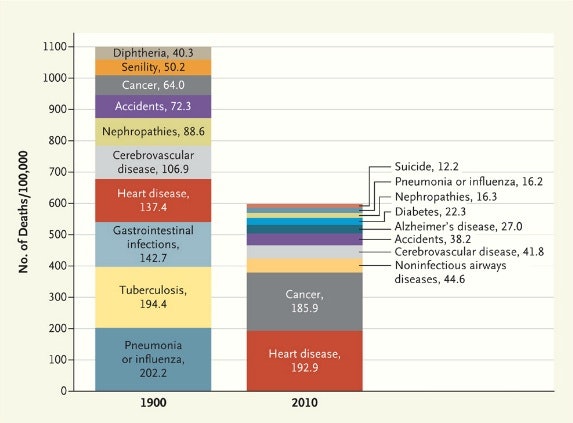As detailed by Vox's Julia Belluz, we have a reasonably clear picture of what our most likely causes of death were back in 1900, as compared to what they were in 2010. And, as you might expect, age appears to be playing a big role — conditions that worsen over time and most commonly afflict older people, like cancers, heart disease and Alzheimer's, have risen to greater prominence as our lifespans have stretched out.
For perspective, the average American in 1900 died in their late 40s, as compared to today's life expectancy in the high 70s. As you can see from the journal's chart, pictured below, back in 1900 people were frequently being killed by things like diphtheria, pneumonia and tuberculosis. Those last three represented the most frequent causes of death on record, accounting for nearly 400 out of every 100,000 deaths.
Nowadays, while still deadly — especially for the very young, very old, or those with weakened immune systems — pneumonia has been relegated to the back of the list, distantly behind the top two killers, heart disease and cancer.
More ...
